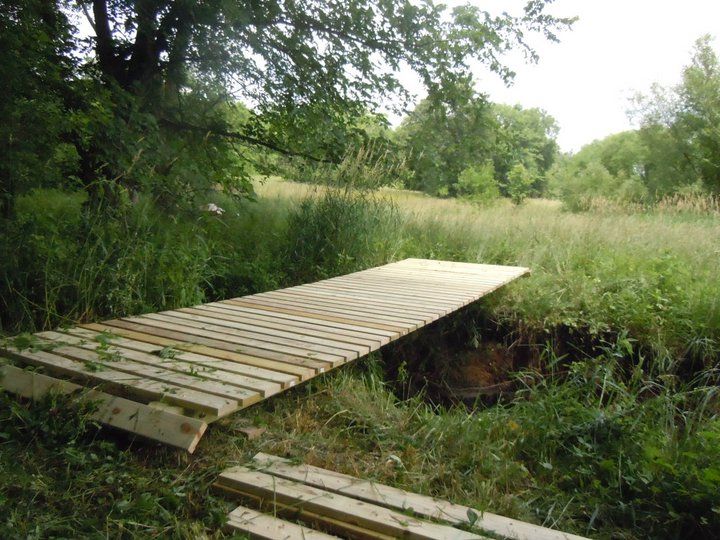Daver
PMA Member
I have a question for the knowledgeable deer hunters here...on my farm there are more than a few places that the terrain is pretty steep and difficult to traverse, as in 15'-20'+ near vertical banks. These banks are are tough for me to climb when it is dry and a real circus act when it is wet/slippery.  Deer will cross these areas in a pinch, BUT, in general these creek banks, etc, are so steep and tall that for the most part the deer steer way, way around them in normal travels.
Deer will cross these areas in a pinch, BUT, in general these creek banks, etc, are so steep and tall that for the most part the deer steer way, way around them in normal travels.
In some cases these steep areas serve me well as they create natural funnels, but in other cases I am convinced that I could really improve the utilization of certain blocks of timber by giving the deer more freedom of movement over these deep crevices.
Also, I have several very stout posts, approximately 14'-15' long each, essentially cut down telephone poles, already at my place doing nothing more than laying in the yard. I have been considering using some of these to build bridges over a couple select "cuts".
My concept would be to dig into the bank a little and set a concrete block in the bank to then serve as a base for the pole(s) to lay on. For each bridge/crossing, I would run two poles parallel to each other, spaced about 3' apart and then use deck boards on top of the poles to create the walkway.
I know these would be very sturdy, and strong enough to easily drive an ATV across them. BUT...would deer take to them? Would the deer feel comfortable walking across a manmade span on top of a bridge like that? If so, is there a distance/elevation that they would cross, etc? I also thought about laying an outdoor carpet across the deck to make it less slippery in wet conditions and perhaps more natural feel for a deer.
Thoughts, ideas, suggestions are welcome...
In some cases these steep areas serve me well as they create natural funnels, but in other cases I am convinced that I could really improve the utilization of certain blocks of timber by giving the deer more freedom of movement over these deep crevices.
Also, I have several very stout posts, approximately 14'-15' long each, essentially cut down telephone poles, already at my place doing nothing more than laying in the yard. I have been considering using some of these to build bridges over a couple select "cuts".
My concept would be to dig into the bank a little and set a concrete block in the bank to then serve as a base for the pole(s) to lay on. For each bridge/crossing, I would run two poles parallel to each other, spaced about 3' apart and then use deck boards on top of the poles to create the walkway.
I know these would be very sturdy, and strong enough to easily drive an ATV across them. BUT...would deer take to them? Would the deer feel comfortable walking across a manmade span on top of a bridge like that? If so, is there a distance/elevation that they would cross, etc? I also thought about laying an outdoor carpet across the deck to make it less slippery in wet conditions and perhaps more natural feel for a deer.
Thoughts, ideas, suggestions are welcome...


